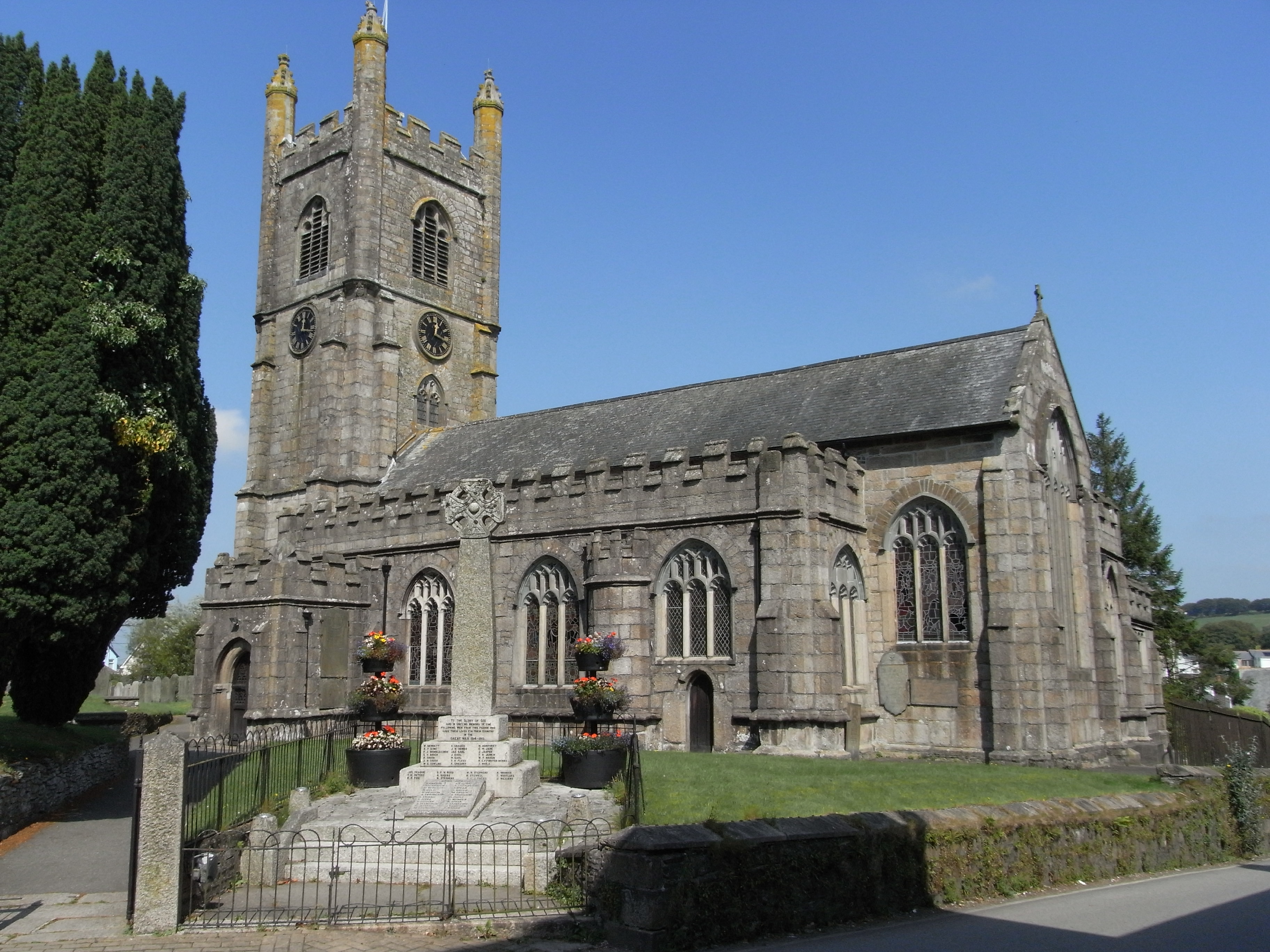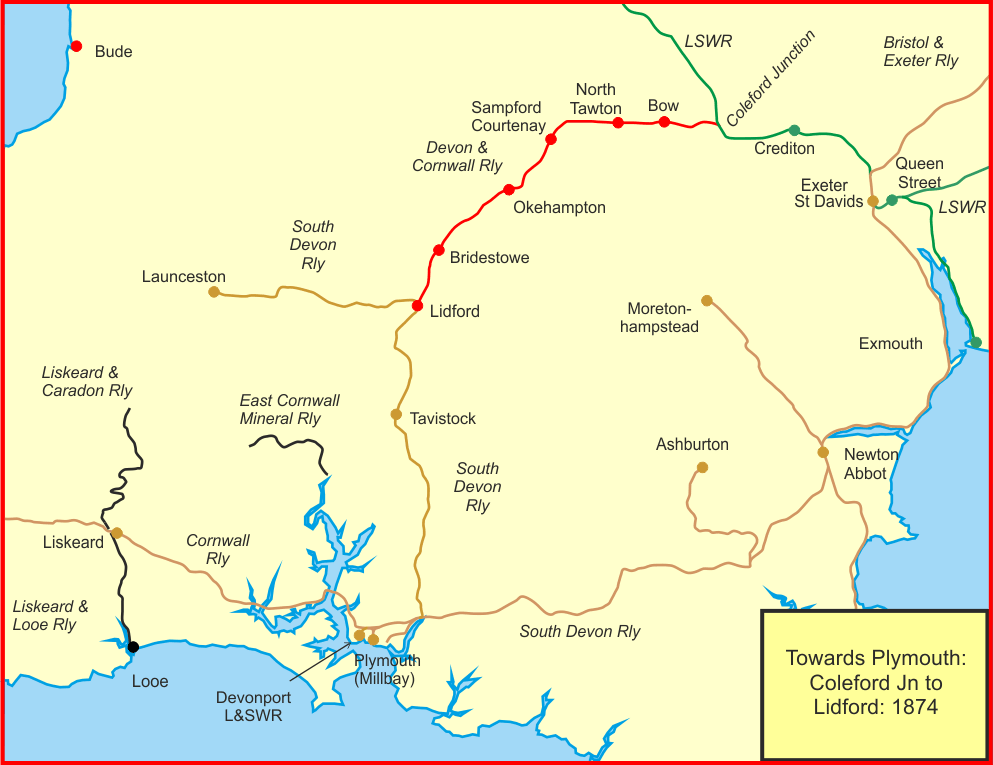|
Callington, Cornwall
Callington ( kw, Kelliwik) is a civil parish and town in east Cornwall, England, United Kingdom about north of Saltash and south of Launceston. Callington parish had a population of 4,783 in 2001, according to the 2001 census. This had increased to 5,786 in the 2011 census. Geography The town is situated in east Cornwall between Dartmoor to the east and Bodmin Moor to the west. A former agricultural market town, it lies at the intersection of the south–north A388 Saltash to Launceston road and the east–west A390 Tavistock to Liskeard road. Kit Hill is a mile north-east of the town and rises to with views of Dartmoor, Bodmin Moor and the River Tamar. The hamlets of Bowling Green, Kelly Bray, Frogwell and Downgate are in the parish. Railway station Callington railway station was the terminus of a branch line from Bere Alston, the junction with the Southern Railway's Tavistock to Plymouth line. The railway line beyond Gunnislake to the Callington terminus ... [...More Info...] [...Related Items...] OR: [Wikipedia] [Google] [Baidu] |
United Kingdom Census 2011
A census of the population of the United Kingdom is taken every ten years. The 2011 census was held in all countries of the UK on 27 March 2011. It was the first UK census which could be completed online via the Internet. The Office for National Statistics (ONS) is responsible for the census in England and Wales, the General Register Office for Scotland (GROS) is responsible for the census in Scotland, and the Northern Ireland Statistics and Research Agency (NISRA) is responsible for the census in Northern Ireland. The Office for National Statistics is the executive office of the UK Statistics Authority, a non-ministerial department formed in 2008 and which reports directly to Parliament. ONS is the UK Government's single largest statistical producer of independent statistics on the UK's economy and society, used to assist the planning and allocation of resources, policy-making and decision-making. ONS designs, manages and runs the census in England and Wales. In its capaci ... [...More Info...] [...Related Items...] OR: [Wikipedia] [Google] [Baidu] |
Frogwell
Frogwell is a hamlet in the parish of Callington, Cornwall, England. It is in the valley of the River Lynher The River Lynher ( kw, Linar) (or St Germans River downstream from its confluence with the Tiddy) flows through east Cornwall, England, and enters the River Tamar at the Hamoaze, which in turn flows into Plymouth Sound. Navigation The nor .... References Hamlets in Cornwall Callington {{Cornwall-geo-stub ... [...More Info...] [...Related Items...] OR: [Wikipedia] [Google] [Baidu] |
JSTOR
JSTOR (; short for ''Journal Storage'') is a digital library founded in 1995 in New York City. Originally containing digitized back issues of academic journals, it now encompasses books and other primary sources as well as current issues of journals in the humanities and social sciences. It provides full-text searches of almost 2,000 journals. , more than 8,000 institutions in more than 160 countries had access to JSTOR. Most access is by subscription but some of the site is public domain, and open access content is available free of charge. JSTOR's revenue was $86 million in 2015. History William G. Bowen, president of Princeton University from 1972 to 1988, founded JSTOR in 1994. JSTOR was originally conceived as a solution to one of the problems faced by libraries, especially research and university libraries, due to the increasing number of academic journals in existence. Most libraries found it prohibitively expensive in terms of cost and space to maintain a comprehe ... [...More Info...] [...Related Items...] OR: [Wikipedia] [Google] [Baidu] |
King Arthur
King Arthur ( cy, Brenin Arthur, kw, Arthur Gernow, br, Roue Arzhur) is a legendary king of Britain, and a central figure in the medieval literary tradition known as the Matter of Britain. In the earliest traditions, Arthur appears as a leader of the post-Roman Britons in battles against Saxon invaders of Britain in the late 5th and early 6th centuries. He appears in two early medieval historical sources, the ''Annales Cambriae'' and the '' Historia Brittonum'', but these date to 300 years after he is supposed to have lived, and most historians who study the period do not consider him a historical figure.Tom Shippey, "So Much Smoke", ''review'' of , ''London Review of Books'', 40:24:23 (20 December 2018) His name also occurs in early Welsh poetic sources such as '' Y Gododdin''. The character developed through Welsh mythology, appearing either as a great warrior defending Britain from human and supernatural enemies or as a magical figure of folklore, sometimes associa ... [...More Info...] [...Related Items...] OR: [Wikipedia] [Google] [Baidu] |
Celliwig
Celliwig, Kelliwic or Gelliwic is perhaps the earliest named location for the court of King Arthur. It may be translated as 'forest grove'. Literary references It is mentioned in the Welsh tale ''Culhwch and Olwen'' whose manuscript dates from the 11th century, though the story is much older. The story describes the court as being at Celliwig in Cernyw (the Welsh name for Cornwall), otherwise known as the kingdom of Dumnonia including modern Devon. The hall is guarded by Glewlwyd Gafaelfawr, Arthur's porter, and Culhwch has difficulty gaining entrance due to the special laws that restrict entry once a feast has begun. Though there is no description of the place the implications of the story are of great wealth and splendour. It describes Arthur's warriors at the court in depth and says that: "From here, one of his Warband, Drem, could see a gnat as far away as Scotland; while another, Medyr, could shoot an arrow through the legs of a wren in Ireland!" Some of the ''Trioedd Ynys P ... [...More Info...] [...Related Items...] OR: [Wikipedia] [Google] [Baidu] |
Tesco
Tesco plc () is a British Multinational corporation, multinational groceries and general merchandise retailer headquartered in Welwyn Garden City, England. In 2011 it was the third-largest retailer in the world measured by gross revenues and the Retail#Global top ten retailers, ninth-largest in the world measured by revenues. It has shops in Republic of Ireland, Ireland, the United Kingdom, the Czech Republic, Hungary and Slovakia. It is the market leader of groceries in the UK (where it has a market share of around 28.4%). Tesco has expanded globally since the early 1990s, with operations in 11 other countries in the world. The company pulled out of the US in 2013, but continues to see growth elsewhere. Since the 1960s, Tesco has Diversification (marketing strategy), diversified into areas such as the retailing of books, clothing, electronics, furniture, toys, petrol, software, financial services, Telecommunication, telecoms and internet services. In the 1990s, Tesco re-po ... [...More Info...] [...Related Items...] OR: [Wikipedia] [Google] [Baidu] |
Ginsters
Ginsters is a company based in Callington in Cornwall, in the south-west of England. The largest pasty maker in the UK in turnover, it specialises in making mass-produced pasties, sausage rolls, sandwiches, pasta bowls and other savoury snacks. Since 1977, it has been owned by Mark and David Samworth. History The Ginsters family were in the business of supplying horse manure to foundries for mixing with sand for the moulds for casting. The business was based in West Bromwich before finally moving to Longwood Lane, Walsall. After the second world war, Geoff Ginster approached his father saying that he wished to move with his family down to the West Country. He asked his father if it would be possible to have his inheritance early in order to so do. Originally moving to Devon, Geoff Ginster started making clotted cream and became very successful to the point where the Milk Marketing Board offered to buy him out. Geoff refused only to be met with the response, "if he did not sell ... [...More Info...] [...Related Items...] OR: [Wikipedia] [Google] [Baidu] |
Tamar Valley Line
The Tamar Valley Line is a railway line from Plymouth, Devon, to Gunnislake, Cornwall, in England, also known as the Gunnislake branch line. The line follows the River Tamar for much of its route. Like all railway lines in Devon and Cornwall, it is unelectrified and all trains are diesel powered. The entire line is single track past St. Budeaux Junction. History The line from St Budeaux to Bere Alston was opened for passenger traffic on 2 June 1890 by the Plymouth, Devonport and South Western Junction Railway (PDSWJ) as part of their line from Lydford to Devonport, which in effect was an extension of the London and South Western Railway's main line from London Waterloo station to Lydford, enabling the LSWR to reach Plymouth independently of the Great Western Railway. The branch to Gunnislake was opened by the PDSWJ on 2 March 1908. The line was listed for closure in the '' Reshaping of British Railways Report'' but was kept open (apart from the section between Gunnislake and ... [...More Info...] [...Related Items...] OR: [Wikipedia] [Google] [Baidu] |
Gunnislake
Gunnislake ( kw, Dowrgonna) is a large village in east Cornwall, England, United Kingdom. It is situated in the Tamar Valley approximately ten miles (16 km) north of Plymouth Gunnislake is in the civil parish of Calstock and is close to Cornwall's border with Devon which follows the course of the River Tamar. It has an electoral ward in its own name which includes much of Calstock and the surrounding area. The population at the 2011 census was 4,574. According to an OCSI report, of the total population, 562 (18.2%) are children, making up a larger proportion of the population than across Cornwall and Isles of Scilly (17.3%). 685 (22.2%) are people of pensionable age, making up a smaller proportion of the population than across Cornwall and Isles of Scilly (24.3%). The village has a history of mining although this industry is no longer active in the area. During the mining boom in Victorian times more than 7000 people were employed in the mines of the Tamar Valley. During t ... [...More Info...] [...Related Items...] OR: [Wikipedia] [Google] [Baidu] |
Exeter To Plymouth Railway Of The LSWR
The Exeter to Plymouth railway of the London and South Western Railway (LSWR) was the westernmost part of a route competing with that of the Great Western Railway (GWR) and its 'associated companies' from London and Exeter to Plymouth in Devon, England. Whereas the GWR route from Exeter followed the coast to Newton Abbot and then went around the southern edge of Dartmoor, the LSWR route followed the northern and western margins of Dartmoor, passing through the towns of Crediton, Okehampton, and Tavistock. The route was constructed piecemeal by independent companies, in most cases supported by the LSWR. LSWR trains first reached Plymouth in 1876 and the route took on its final form in 1891. The central part of the line closed in 1968, leaving just local services at either end. History Railways to Exeter The broad gauge Bristol and Exeter Railway (B&ER) was the first line to reach Exeter. It had reached St Davids station in Exeter in 1844 and was allied with the Great Western ... [...More Info...] [...Related Items...] OR: [Wikipedia] [Google] [Baidu] |




